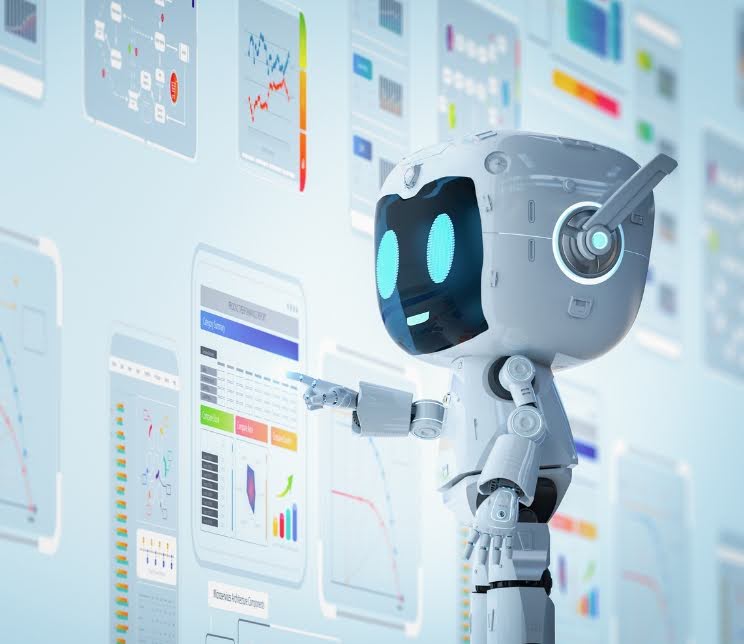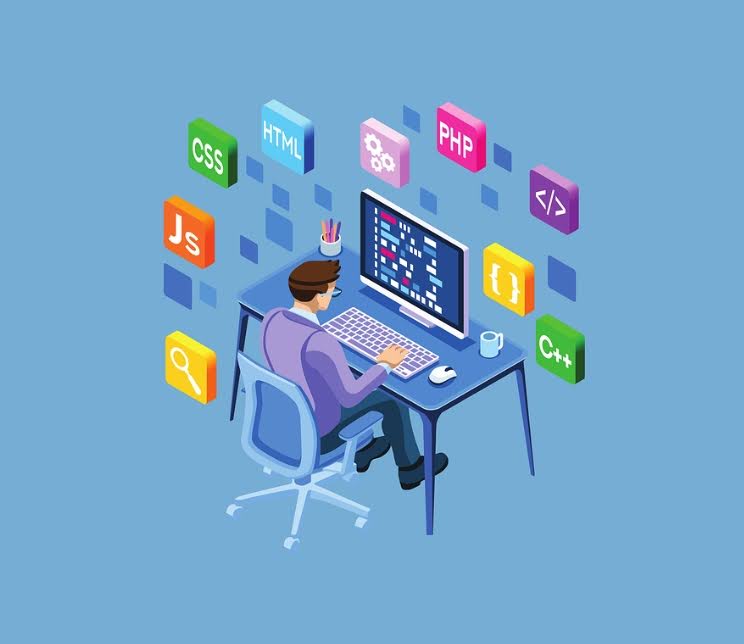The Future of Digital Success: Web Trends and IT Strategies for 2025

Introduction
The digital world is changing faster than ever. Every year, new technologies, smarter tools, and higher user expectations reshape the way websites and online platforms are built. For businesses, this means adapting quickly or risk falling behind. In 2025, the key to digital success will be staying ahead of these changes and adopting the right IT strategies for 2025.
From artificial intelligence and low-code platforms to cybersecurity and decentralized systems, the coming year will bring major shifts in how we think about web development. Whether you’re a business owner, a developer, or simply someone interested in the future of the web, understanding these trends is vital. we’ll explore the top 7 web trends and IT strategies that will dominate 2025 and how you can prepare your digital presence to thrive.
Summary
1. Artificial Intelligence: The Driving Force of Digital Success
2. Low-Code and No-Code Platforms: Faster Time-to-Market
3. Programming Languages Evolving for New Demands
4. Headless CMS: Freedom and Flexibility
5. Data Privacy and Regulations: Staying Compliant
6. Cybersecurity with DevSecOps
7. Decentralized Web and Performance Optimization
1. Artificial Intelligence: The Driving Force of Digital Success

Artificial Intelligence (AI) will remain one of the most powerful tools shaping the future of websites and online platforms in 2025. Over the past few years, AI has already transformed how websites are built, how content is delivered, and how businesses connect with their customers. Now, its influence is expanding even further.
For developers, AI is not just about automation anymore. Tools like GitHub Copilot are already reducing repetitive coding tasks, while AI-powered analytics tools monitor performance and detect issues before they disrupt users. On the customer side, AI is making websites smarter with personalization features. From chatbots that learn to predict customer needs to tailored content suggestions, AI is driving engagement and conversions.
In 2025, we will see AI being used for more creative solutions, like predictive user journeys and generative content. When combined with edge computing and Content Delivery Networks (CDNs), AI will allow websites to respond faster, offering real-time interactions that feel seamless. Businesses that adopt these innovations will be able to stay ahead in the race for digital success.
2. Low-Code and No-Code Platforms: Faster Time-to-Market

Low-code and no-code (LC/NC) platforms are already changing how applications and websites are developed. These platforms allow non-technical users to create websites and apps using visual tools instead of complex coding. As we move into 2025, their popularity will continue to grow because they save time, reduce costs, and make web development more accessible.
For startups and small businesses, these platforms are game changers. They provide a quick way to test new ideas, build simple apps, or automate workflows without hiring a full technical team. On the other hand, larger companies use them to prototype and launch projects faster, while still relying on skilled developers for more complex systems.
WordPress users are also benefiting from this trend with tools like block editors, forms, and advanced custom fields that make website building easier. In 2025, LC/NC platforms will not replace developers but will complement their skills, freeing them from repetitive work and letting them focus on higher-level innovation.
3. Programming Languages Evolving for New Demands

The choice of programming languages plays a big role in how websites and apps are built. In 2025, established languages like JavaScript and Python will remain strong, but newer ones like Rust, Go, and Kotlin will gain more traction. This change highlights the demand for quicker, safer, and more efficient development.
Python continues to lead in fields like AI and data science, while JavaScript remains the backbone of front-end and full-stack development. Rust, with its focus on speed and safety, is becoming popular for system-level tasks. Go is proving itself in cloud applications, while Kotlin is making its way beyond Android apps into enterprise systems.
For developers, keeping up with these evolving languages will be essential. They open up new opportunities to create faster, more secure, and scalable websites. For businesses, this evolution ensures they can adopt new tools that align with modern IT strategies for 2025.
4. Headless CMS: Freedom and Flexibility

A key trend influencing the digital landscape is the growth of headless content management systems (CMS). Unlike traditional platforms that connect the front end and back end, a headless CMS keeps them independent. This gives developers more freedom to design user interfaces while still managing content efficiently.
A headless CMS uses APIs to distribute content smoothly across websites, apps, and smart devices. For WordPress users, this means combining its content power with modern front-end frameworks like React or Vue. The result is faster websites, smoother user experiences, and flexibility to build unique designs without being limited by templates.
To stay ahead in the market, more organizations are expected to adopt headless CMS solutions by 2025. As user expectations grow for speed and personalized experiences, this approach will help organizations deliver consistent and high-performing results across all devices.
5. Data Privacy and Regulations: Staying Compliant

As digital activity grows, so does concern about data privacy. Governments across the globe are strengthening user protection laws, and in 2025, additional industries will encounter tougher compliance requirements. Regulations like GDPR in Europe and new digital acts in the U.S. are setting higher standards for how businesses handle customer data.
Compliance is now mandatory for developers and businesses it’s no longer just a choice. Websites will need to include features like cookie consent, encryption, and options for users to manage their data. Privacy-first approaches, such as collecting only the data you need and anonymizing sensitive information, will become standard practice.
Industries like healthcare, finance, and eCommerce are already facing strict rules, but in 2025, even sectors like IoT and AI-driven apps will be closely monitored. Companies that treat compliance as part of their IT strategies for 2025 will gain trust, avoid fines, and stand out as responsible brands.
6. Cybersecurity with DevSecOps

With rising cyber threats, cybersecurity is no longer something businesses can leave for later. DevSecOps, a practice that integrates security into every step of development, will be a core strategy in 2025. Instead of fixing issues after launch, DevSecOps ensures that safety is built into apps and websites from the start.
This means automated tools will check code for weaknesses, monitor open-source libraries, and provide alerts about risks. Real-time threat detection will help teams respond quickly to attacks, while secure cloud configurations will protect sensitive data.
For users, this creates trust. For businesses, it prevents costly breaches. As digital systems become more complex, DevSecOps will be one of the strongest pillars of achieving long-term digital success.
7. Decentralized Web and Performance Optimization

Decentralized web technologies like blockchain and peer-to-peer networks are moving from niche use to mainstream in 2025. These tools give users more control over their data while reducing risks of hacks or censorship. For example, decentralized identity systems allow people to log in securely without relying on third-party services.
At the same time, web performance is becoming more important than ever. Google’s Core Web Vitals—measuring speed, stability, and interactivity—are now key ranking factors. Developers are using techniques like lazy loading, server-side rendering, and edge computing to make websites faster. Businesses that fail to optimize performance risk losing users and rankings.
The combination of decentralized technologies and performance optimization represents the future of web development. It creates safer, faster, and more reliable experiences for users worldwide.
FAQs:
Q.1. What is the main driver of digital success in 2025?
A.1. AI, combined with faster development tools and stronger cybersecurity, will be the biggest drivers of digital success.
Q.2. Why are low-code and no-code platforms important?
A.2. They save time, reduce costs, and allow non-technical users to create apps and websites quickly.
Q.3. How does a headless CMS help businesses?
A.3. It separates content management from design, giving developers more freedom and enabling content to be used across different platforms.
Q.4. Why is DevSecOps essential in 2025?
A.4. It ensures security is built into every stage of development, preventing data breaches and building user trust.
Q.5. How do Core Web Vitals affect websites?
A.5. They measure site performance and directly impact search engine rankings, user experience, and engagement.
Conclusion
The future of digital success in 2025 depends on innovation, adaptability, and strong strategies. From AI-driven tools and low-code platforms to compliance rules and decentralized technologies, the digital world is moving faster than ever. Businesses that embrace these IT strategies for 2025 will not only survive but thrive in an increasingly competitive online environment.
If you are preparing your business for 2025, focus on building smarter, safer, and faster digital experiences. The future is full of opportunities for those ready to adapt.
Call at (917) 503-1133 or head over to https://srutatech.com/ to see how we create websites that generate results and help your business grow online.

